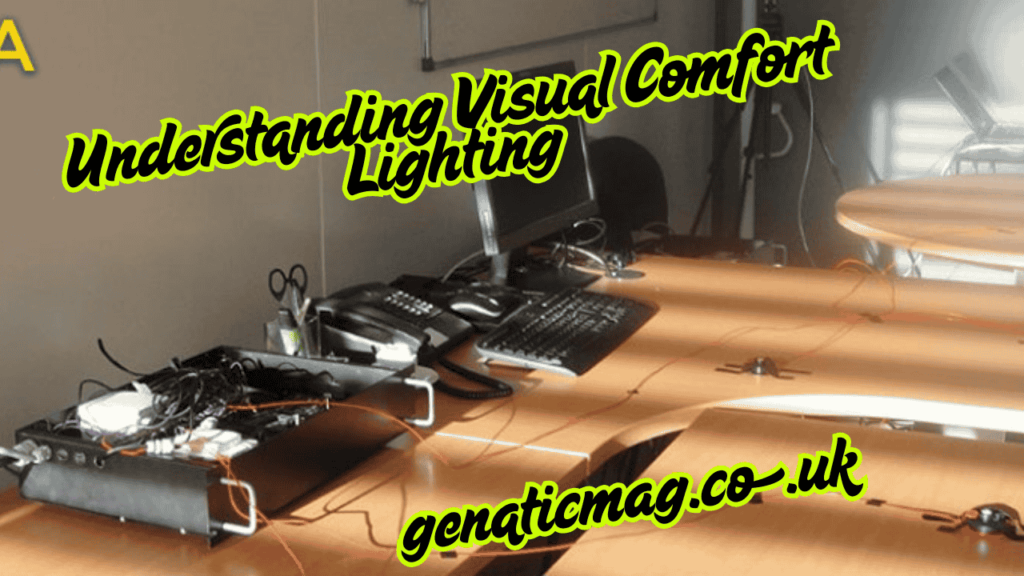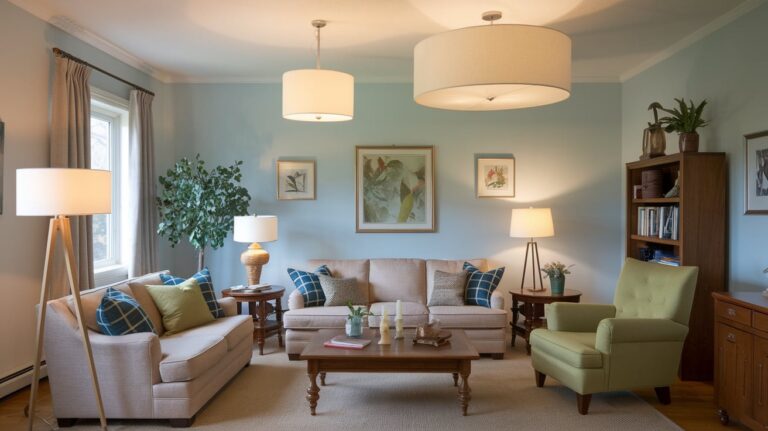Lighting plays a critical role in influencing the aesthetic and functional experience of a space. Whether it’s a warm living room, a hectic office, or a tranquil hospital room, the quality of lighting dramatically affects how people interact with and feel in that setting. This is where the concept of Visual Comfort Lighting becomes vital. In this post, we’ll investigate what visual comfort lighting actually means, how it enhances environments with the proper kind of illumination, and why it should be a top priority in design planning.
What Is Visual Comfort Lighting?

At its heart, Visual Comfort Lighting refers to lighting that enables clear, strain-free vision without generating discomfort or distraction. It is not simply about having enough light—it’s about having the perfect light. Factors such as brightness, color temperature, glare, contrast, and distribution all contribute to visual comfort.
At its heart, Visual Comfort Lighting refers to lighting that enables clear, strain-free vision without generating discomfort or distraction. It is not simply about having enough light—it’s about having the perfect light. Factors such as brightness, color temperature, glare, contrast, and distribution all contribute to visual comfort.
The Science Behind Visual Comfort

Lighting affects not just what we can see but also how we see it. To perceive light and shade, our brains and eyes collaborate. This process could be complicated and result in visual stress if there is excessive brightness or contrast, flickering lights, or exposure to extreme color temperatures.
Visual comfort takes into account:
- Luminance is the quantity of light that a surface emits or reflects.
- Reducing extremely bright light sources in the field of vision is known as “glare control.”
- How accurately a light source depicts genuine colors is determined by the Color Rendering Index (CRI).
- The “warmth” or “coolness” of light is described by color temperature, which is generally given in Kelvins.
- Light homogeneity is the even dispersion of light in a region devoid of glaring contrasts.
By balancing these elements, designers can create spaces that are not only well-lit but also inviting and visually healthy.
The Role of Ambient, Task, and Accent Lighting

To achieve visual comfort, it’s important to use a layered lighting approach. This involves combining different types of lighting to serve various purposes.
Ambient Lighting
Also called as general lighting, ambient lighting generates an overall glow that illuminates a room evenly. It determines the base level of illumination and effects the mood of the place. Soft, diffused sources like ceiling-mounted lamps or wall sconces typically fulfill this goal.
Task Lighting
This form of lighting is focused to specific regions where activities such as reading, cooking, or working are carried out. Desk lamps, under-cabinet lights, and adjustable track lighting are all excellent examples. It is crucial to ensure that these lights are bright enough for the task at hand without causing harsh shadows or glare.
Accent Lighting
Used primarily for aesthetics, accent lighting draws attention to artwork, architectural details, or decorative objects. Though not essential for functionality, it contributes to the overall sense of comfort and harmony in a space by adding depth and interest.
When all three types are thoughtfully combined, the result is a dynamic and adaptable lighting scheme that supports both vision and emotion.
Why Visual Comfort Matters in Different Environments
Visual comfort lighting isn’t a one-size-fits-all solution. Different environments have different lighting needs, and recognizing these distinctions can lead to better user experiences.
Homes
In residential situations, comfort is crucial. Lighting should induce relaxation while supporting everyday chores. Warm-toned, dimmable lighting in living areas and bedrooms can induce relaxation, while cooler task lighting in kitchens and bathrooms improves functionality.
Offices and Workspaces
Poor office lighting is a leading cause of eye strain and reduced productivity. Visual comfort here means bright but diffused overhead lights, proper daylight integration, and individual task lighting. Adjustable systems that accommodate changing daylight throughout the day are ideal.
Retail and Hospitality
In stores, lighting should not only flatter products but also create an enjoyable experience for shoppers. Hospitality environments, such as hotels and restaurants, benefit from soft, warm lighting that makes guests feel welcome and comfortable.
Healthcare Settings
Clinics and hospitals require a careful balance. While medical tasks require bright, clear illumination, patient rooms benefit from softer lighting to promote rest and recovery. For both patients and employees, circadian lighting solutions that mimic natural daylight can enhance mood and sleep quality.
Daylight Integration and Circadian Lighting
Natural light is the most comfortable and efficient source of illumination. Incorporating daylight into interior spaces through windows, skylights, or light wells not only reduces energy consumption but also supports human health.
An new method in lighting design, circadian lighting seeks to imitate the way daylight naturally changes. Designers can increase mood, productivity, and sleep quality by modifying artificial lighting’s color temperature and intensity to correspond with the body’s internal rhythm. For instance, warmer, dimmer light in the evening can encourage relaxation, whereas cooler, bluer light in the morning can increase alertness.
Glare and Its Impact on Visual Comfort
One of the biggest enemies of visual comfort is glare—excessive brightness that causes visual discomfort or disability. There are two main types:
- Discomfort glare: which causes annoyance but doesn’t reduce visibility
- Disability glare: which impairs vision
Reducing glare involves careful placement of light fixtures, using diffusers, selecting appropriate beam angles, and incorporating surfaces that don’t reflect light harshly. High-quality lighting products often include built-in glare control features such as louvers or baffles.
Technological Innovations and Smart Lighting
With the growth of LED lighting and smart systems, achieving visual comfort has grown easier and more adjustable. Smart lighting allows users to alter brightness and color temperature throughout the day. Some systems can even learn user preferences and automatically modify settings for optimal comfort.
Dimmable LEDs, motion sensors, tunable white lighting, and voice-activated controls are examples of how technology is reshaping our relationship with light. These tools provide greater control, improve energy efficiency, and enhance the user’s ability to create visually comfortable environments.
Design Tips for Enhancing Visual Comfort in Any Space
Here are a few practical tips for ensuring visual comfort when designing or renovating a space:
- Use various light sources rather of relying on a single lamp.
- Layer light with ambient, task, and accent lighting.
- Avoid over-lighting by using dimmers or lighting zones.
- Consider the surface reflectivity of walls and furnishings.
- Place light sources carefully to prevent shadows or glare.
- Use high CRI (Color Rendering Index) lighting for enhanced color integrity.
- Integrate natural light wherever possible.
- Match color temperature to activity—warm for relaxation, chilly for concentrate.
Conclusion: Lighting for Well-Being and Performance
Understanding Visual Comfort Lighting: Enhancing Spaces with the Right Illumination, What It Means, and Why It Matters isn’t just about aesthetics or brightness—it’s about creating environments that support human well-being, efficiency, and emotion. Whether in a home, office, store, or hospital, the right lighting can transform how a space feels and functions.
By adopting thoughtful design practices, leveraging modern technologies, and respecting the natural rhythms of the human body, we can illuminate spaces in ways that truly make them better—not just brighter
Also Read : Understanding Visual Comfort Lighting: Enhancing Spaces with the Right Illumination
